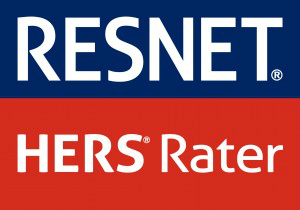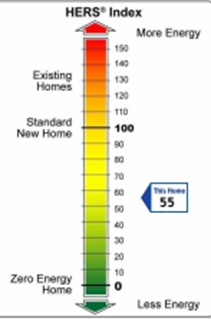HERS Ratings
Energy Efficiency
 As HERS raters, we work with the builder, developer, customer and design team prior to application for the building permit to ensure compliance with STRETCH code. For the best results, we should be included in the team as early as possible. Through our experience, we can offer suggestions that are both cost effective and ensure compliance with the ever changing building code.
As HERS raters, we work with the builder, developer, customer and design team prior to application for the building permit to ensure compliance with STRETCH code. For the best results, we should be included in the team as early as possible. Through our experience, we can offer suggestions that are both cost effective and ensure compliance with the ever changing building code.
Specialized Training and Qualified Experience
In addition to the initial training and certification, HERS raters are affiliated with a certified provider / auditor which is responsible for ongoing code education and quality assurance oversight of the HERS rater’s work.
Qualified Experience
In addition to this initial training and certification, HERS raters must be affiliated with a certified HERS provider which is responsible for ongoing code education and quality assurance oversight of the HERS rater’s work.
Thorough Testing
HERS ratings require testing of the air leakage rate of residential units. A blower door test will test the house itself for air leaks. In addition, for homes that have forced air heating and central air conditioning systems that have ductwork running outside of the heated portion of a house, duct testing or a duct leakage test is needed. These tests help calculate how much energy is needed to heat and cool a home and help builders to identify possible problems before a home is completed when there is still time to fix them cost effectively.
HERS Index for Home Energy Rating
HERS stands for ‘Home Energy Rating System’ and is a national standard that uses information on the design of the energy systems in a home to calculate, via computer modeling, the average energy needs of that home so it can give it a rating score. The HERS Index was developed by the nonprofit Residential Energy Services Network (RESNET) for the mortgage industry, and it is utilized by the Federal Internal Revenue Service (IRS) and the LEED for Homes program.

The HERS Rating Scale
On the HERS index scale, smaller numbers are better, with 0 representing a net zero energy home, and 100 representing a home built according to the national model energy code 2006. A HERS rating of 55 means that the home uses about 45 percent less energy than the same size home built to the 2004/2005 IECC code requirements. The residential stretch code is based on the nationally successful ‘Energy Star for Homes’ program requirements, which utilizes HERS ratings.
Independent Certification
Residential buildings meeting the stretch code through a HERS rating and thermal bypass checklist require independent certification by a HERS rater. Their work will produce a report detailing the energy systems in the building and will provide a HERS index score, together with proof of whether the home qualifies for rebates.
The HERS Report
Submission of a copy of the HERS report, together with a completed Energy Star Thermal Bypass checklist and posting the relevant energy data on the electrical panel in the home, are the steps required to demonstrate compliance with the energy portions of the code and must be submitted to the local building inspector prior to receiving a certificate of occupancy.
Meeting Requirements
For new residential homes including multi-family homes of three stories or less, builders essentially follow the Energy Star for Homes program requirement in Massachusetts and are required to show that each unit meets or is below a maximum HERS index score.
HERS Rating Ensures
In addition to the HERS score, the homes must be inspected using the Energy Star ‘thermal bypass checklist.’ The new base code may require duct testing. These inspections ensure that the home is well-air-sealed, while the HERS rating ensures that the home is designed to be well-insulated with efficient heating and cooling and lighting.
New Homes
New homes, renovations and additions building under the stretch code will have to get a HERS rating of 55 or less. Renovations and additions to homes are new to the HERS rating approach. The HERS performance-based approach provides a very good way to ensure that homes are not only designed properly but also well built.
Energy Efficient
As part of the HERS rating, the home will be tested for air leakage, and, under both the base and the stretch code, homes with heating and cooling ducts may also have those tested for leakage. Combined with the thermal bypass checklist, the HERS rater, builder and building inspector, can have confidence that the completed homes really are energy-efficient.